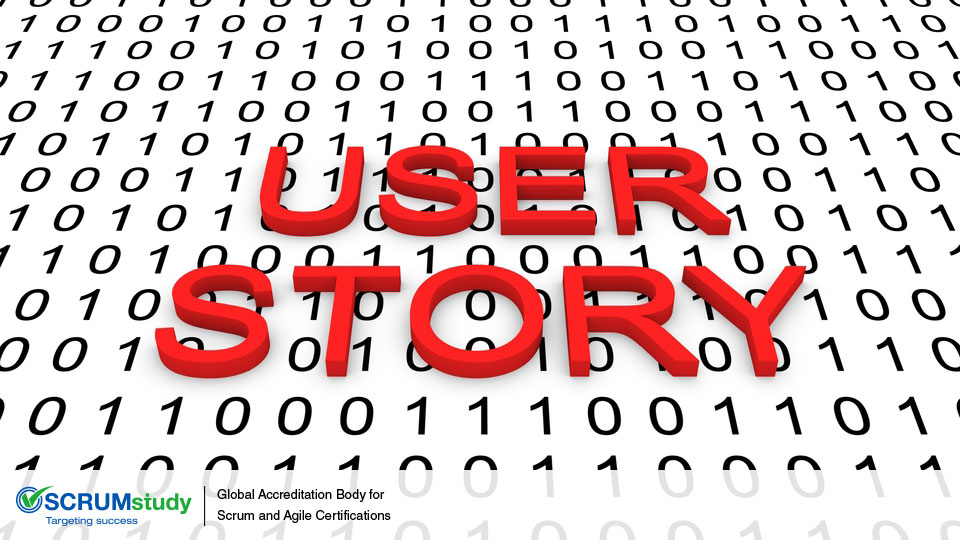What is a User Story in Scrum, and why is it important?
Posted bySCRUMstudy® on July 17, 2024
Categories Agile Product Owner Scrum Scrum Master Training
Scrum User Stories, a cornerstone of Agile development, are meticulously detailed in the SBOK™ Guide by SCRUMstudy, providing invaluable guidance for teams seeking to effectively capture and communicate user requirements. The guide emphasizes the importance of user-centric approaches in product development, advocating for the creation of clear, concise, and actionable user stories that drive value and alignment with stakeholder needs. Through the SBOK™ Guide, teams learn to craft user stories that are independent, negotiable, valuable, estimable, small, and testable (INVEST), ensuring that they are well-suited for implementation within iterative development cycles. By leveraging techniques such as story mapping and acceptance criteria definition, teams can collaboratively refine user stories to enhance clarity and mitigate risks. Furthermore, the SBOK™ Guide underscores the significance of continuous refinement and prioritization of user stories throughout the project lifecycle, empowering teams to adapt to evolving requirements and deliver maximum value to customers. Thus, by adhering to the principles outlined in the SBOK™ Guide, teams can harness the power of user stories to drive successful Agile projects that delight stakeholders and exceed expectations.
In the Scrum Agile framework, User Stories serve as concise descriptions of features or functionalities from an end-user perspective. These stories capture the requirements of the project in simple language, focusing on the value they deliver to the customer. User Stories are an integral part of the Product Backlog, aiding in effective communication between the stakeholders and the Scrum Team. They facilitate collaboration, allowing the team to prioritize tasks and deliver incremental value during each Sprint. By encapsulating user needs and expectations, User Stories guide the development process, ensuring that the final product meets customer requirements and adds tangible value to the project.
User Stories adhere to a specific, predefined structure and are a simple way of documenting requirements and desired end-user functionalities. A User Story tells you three things about the requirement: Who, What, and Why. The requirements expressed in User Stories are short, simple and easy-to-understand statements. The predefined standard format results in enhanced communication among the stakeholders and better estimations by the team.
The Product owners create User Stories which are designed to ensure that the customer’s requirements are clearly depicted and can be fully understood by all business stakeholders. The Product Owner, based on his or her interaction with the stakeholders, business knowledge and expertise, and inputs from the team, develops User Stories that will form the initial Prioritized Product Backlog for the project. At times, the Product Owner may recruit a Business Analyst to assist with writing User Stories.
How User Stories are created?
User Story Workshops User Story Workshops are useful in understanding user expectations for the deliverables and are excellent for team building. They also facilitate preparation for the planning of the next Sprint. A User Story Workshop is a good platform to discuss and clarify every element of a product and often delve into the smallest details to ensure clarity. These workshops help the Product Owner to prioritize requirements and enable the Scrum Core Team to have a shared perspective of the Acceptance Criteria. They ensure that the Epics and User Stories describe the functionality from the users’ point of view, are easy to understand, and can be reliably estimated.
User Group Meetings
User Group Meetings involve relevant business stakeholders (primarily users or customers of the product). They provide the Scrum Core Team with firsthand information about user expectations. This helps in formulating the Acceptance Criteria for the product and provides valuable insights for developing Epics. User Group Meetings are vital in the prevention of expensive rework that may result from a lack of clarity regarding expectations and requirements. These meetings also promote buy-in for the project and create a common understanding among the Scrum Core Team and relevant Business Stakeholder(s).
Focus Group Meetings
Focus Group Meetings are a qualitative technique to gauge and understand user needs and expectations about a proposed product. A small group of users are selected to form the focus group. This group may be selected randomly from a large pool of users or can be selected specifically to represent all the major Personas being targeted. Focus Group Meetings normally adhere to a certain format in which the group is asked questions that they then discuss among themselves. Each Focus Group Meeting can have its own rules of discussion as decided by the organizers. These meetings are usually held in the presence of a moderator and recorder.
User or Customer Interviews
Engaging business stakeholders, including the sponsor, users, and customers of the product, is important to gain the necessary context and insight required to develop Epics. Quality time spent interviewing users and customers will result in ensuring that the requirements in Epics align with the overall Project Vision, thereby delivering greater value.
Questionnaires
A cost effective way to gain quantitative and qualitative statistical insight from a large number of users or customers is to use surveys or questionnaires. A Questionnaire is a research instrument that contains questions to be asked to a respondent in order to collect information about a specific issue or topic. Questionnaires can be self-administered or administered by an interviewer. In conclusion, user stories are the best way to document the requirements from the end uses perspective. The Use Stories can be written in several ways but the basic aim of creating these User Stories is to understand the requirements of the end user and implementing them accordingly.
To read more interesting articles about scrum and agile, visit – www.SCRUMstudy.com/blog
Also for all latest updates and information on SCRUM follow @SCRUMStudy_ on Twitter.
What is a User Story?
Posted bySCRUMstudy® on March 23, 2023
Categories Agile Product Owner SBOK® Guide Scrum Scrum Guide
A User Story is basically a statement of the result a user needs to perform his or her task.
It tells who, what and why pertaining to a prerequisite in a simple and conscientious way often written simply on a notecard or post-it note made of paper.
In Scrum, User Stories are written by the Product Owner to meet the needs of the business user and can also involve input from the entire Scrum Team.
User Stories are an easy way of taking care of customer requirements without the need to make formal requirements documentation and without the need to perform tasks which are about administering and maintaining that documentation.
Faster response–in a much more economical way–to the dynamics of ever changing requirements is the prime intention of the User story.


